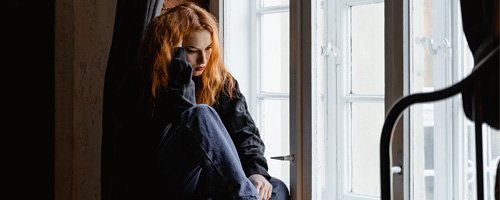Seasonal Affective Disorder (SAD)

Seasonal affective disorder (SAD) is directly related to our circadian rhythms. As daylight grows shorter in the winter months, the darkness triggers a greater production of melatonin and much less vitamin D and serotonin. As a result, we feel more sleepy, lethargic, and emotionally detached. This inconsistency in our sleep-wake schedules is what leads to depression.
For this reason, the American Psychiatric Association classifies SAD as a type of major depressive disorder (MDD). While people with MDD feel depressed year-round, SAD lies dormant for most of the year, becoming most severe in January and February. Although it is possible for SAD to occur during the summer, it is far less common. Plus, it is more likely to occur in populations furthest from the equator and at higher altitudes.
But doesn't everyone feel a little more depressed in the winter?
Yes, but SAD is a little more severe than that.
Like MDD, SAD is a persistent depressed mood that lasts every day for a few months. People with SAD may lose interest in activities they once enjoyed, sleep even longer without feeling rested, and experience significant changes in weight and appetite. This is what makes SAD far different from mere "winter blues."
Then why are some people more prone to SAD?
While the change in daylight obviously triggers SAD, the cause still eludes researchers.
There may be something in people's biology or psychology that makes them more vulnerable to depression at certain times of the year. As far as we know, of the 6 percent of people who experience SAD every year, most of them tend to be women, teenagers and young adults.
What can people with SAD do for their health?
Light therapy is a common treatment for SAD.
It involves the use of a light box that mimics natural light, thereby promoting wakefulness even while it's getting darker outside. But although this therapy has proven effective with and without medication, it may cause eyestrain, headaches and nausea in people who are sensitive to light. It may even trigger mania in people with bipolar disorder.
For this reason, researchers have been developing other therapies that are just as effective as light therapy but without the drawbacks. Although some of these therapies have not received much scientific support, another option—cognitive behavioral therapy (CBT)—has been shown to reduce the onset of depressive symptoms. CBT for SAD may involve associating winter with more positive emotions, such as fun outdoor activities (skiing, building a snowman) and indoor activities (drinking hot chocolate, reading a book).
Otherwise, read here for a few cost-effective tips from the American Psychological Association.
-
Having Winter Woes? Here are 4 Ways SleepPhones® Headphones Can Improve Your Mood

Winter can be brutal, but it doesn't have to be miserable. Let SleepPhones® headphones do the work of relieving your seasonal distress. Here's how.
